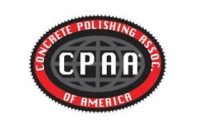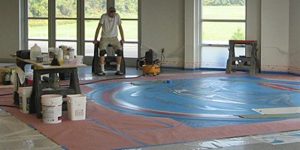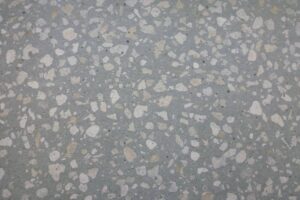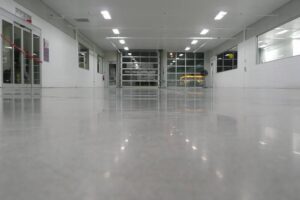The best way to predict the future is to learn from history. However, the polished concrete industry is a very young industry. One cannot look to the history of polished concrete to make predictions about its future. One has to look instead at the histories of the established flooring industries and other related industries.
I believe that knowledge from the flooring industry is what is missing in the polished concrete industry. Polished concrete is sold as a flooring choice in so many cases, yet most of those in polished concrete are from a concrete background. The concrete industry is quite different from the flooring industry. While the concrete and flooring industries have joined together in the polished concrete industry, experience and knowledge is only derived from one of the parent industries.
I see companies attempting to differentiate themselves in ways that have already been proven or failed in other flooring industries. I see the polished concrete industry making some of these attempts early in the game, while the industry still remains very small. Carpet, ceramic, wood flooring, and other flooring industries did not take most of these actions until those industries had hundreds of millions of dollars in sales.
The basic question of those in the industry, whether they are contractors or suppliers to contractors, is, “How do I grow?” The answer to that question is in understanding your end user and related industries, and in changing that question to “How do WE grow?”
What do end users want in a floor? First and foremost, they want a good-looking floor. Secondly, they want a floor that functions, is easy to maintain, and lasts. Thirdly, they want a floor that fits into their budget. They want a good value. To determine if they are getting a good value, the end user has to understand the floor he or she is buying.
With so many companies, both contractors and suppliers, rushing to differentiate themselves to control their market share in such a new industry, the end user has become confused, and the future of polished concrete as a long-lasting industry is actually threatened. The rest of the flooring world learned a long time ago that it was to everyone’s advantage to work together to create some standardization to help end users understand what they are buying. The real competition, after all, is other kinds of flooring with which the end user is more familiar, as well as the choice of simply leaving concrete in its natural state. A confused customer will simply go with another floor, or choose to do nothing. As human beings, we tend to be most threatened by those most like us. We fear our direct competitors and forget our more indirect competitors, who are as much, if not more, of a threat. That is very much the case with polished concrete, because the rest of the flooring industry has a vast history of knowledge from which to draw, while the history of polished concrete itself is much too shallow. Before the various players rush to differentiate themselves from each other, and build a name for themselves amongst each other, they need to pull together to identify their product and all the different variations of polished concrete, both wet and dry. This will help build a name for polished concrete in general. By rushing to the next step, the players are actually stifling the growth.
In the American marketplace, there is one truth that stands above any other. The end user will always look for faster, cheaper and better. Those that do not follow these rules may succeed in a niche market, but they will never become a real player in their industry. I believe the saying is, “Sell to the classes and you’ll dine with the masses, but sell to the masses and you’ll dine with the classes.” That philosophy has certainly worked for giants such as Ikea, Wal-Mart, Home Depot and Lowe’s.
A lot of changes will take place in the industry over the next three years. The landscape will change. Factors that were not factors so early in related industries will become factors in the polished concrete industry. The Chinese and Koreans have already entered the marketplace with much less expensive tooling. While quality is sometimes an issue, drastic improvements have been made. Sometimes the expense of labor in the Western world can work against quality. Consider the auto industry. Sometimes corners are cut on quality in order to offset the expense of labor and remain price-competitive. Three hundred million people in China still only earn about a dollar a day. With such low labor costs, a lot of margin is free for product development, even if they are selling for less.
While an industry is usually larger and more developed before such players enter into the scene, the growth of the industry has been so exaggerated that it has invited such competition early. This is bad for vendors, but actually good for the contractor and the industry as manufacturers compete with unpolished concrete and other forms of flooring. With more and more manufacturers of equipment and tooling, and more and more companies selling direct to the contractor rather than through distribution, the contractor is, more than ever, in the driver’s seat. It is a buyer’s market, and a perfect market for establishing best practices.
It will be very interesting to see what develops in the polished concrete industry over the next few years. My friends in the older, more established flooring industries do not believe in the long-term potential of polished concrete. They say it is a flash in the pan — a fluke of an industry that arose from a little work done for Home Depot and Lowe’s stores. My friends in the decorative concrete and chemical industries and the polished concrete industry itself believe the potential is huge. I believe the truth is in between. Polished concrete, if managed correctly and collectively as an emerging industry, holds a lot of promise and offers a lot of opportunity. But, to get it to the point of being an established, long-term, viable industry will take a lot of work, a lot of cooperation and a lot of open-mindedness.
As someone who became involved in the very early days, first through a distributorship and then with a manufacturer of equipment and tooling, I know that the polished concrete industry grew through a very narrow crack in the concrete, so to speak. Lowe’s and Home Depot did create a large temporary demand. Contractors bought a lot of equipment and tooling to do work for these two companies. However, from that narrow crack it is possible for a decent-sized industry to emerge. Because I feel so personally connected to the industry, I am rooting for it, and I am very hopeful that enough of the players will be able to quickly learn and maneuver in an industry that is changing faster than it is growing.
The American marketplace is gruelingly competitive, and only the fittest survive. The contractor that survives, and the supplier that survives, will find ways to get on and off the job faster, provide a floor for less money, and still provide a quality floor. The successful contractor will establish best practices. One doesn’t always have to be the least expensive or the fastest, but one had better at least be in the ballpark. Expectation levels of the end product and service are a must, and achieving them requires education and standardized clarifications. If the end user is confused and fickle, the industry is confused and fickle. There is a saying, “It takes a village.” It is going to take everyone pulling together for everyone in the industry to do better. The hurdle is human nature. Before we can overcome our competition, we must overcome ourselves.
















